
27 Feb NEW PROPOSALS FEBRUARY 2024
1. Mukhalinga
Maharashtra/Karnataka
18th/19th century
Bronze casting.
cm 30 by 25 by 28.
Price on request
This could be the face of a king or a hero, but the cobra-shaped earrings with five heads and the third eye on the forehead are the unmistakeable mark of Shiva. The large peering eyes seem to be all-seeing. The moustache groomed in the fashion of the time and the beard simply incised on the metal give the face an air of worldly topicality. On the head sits the typical turban of Maratha leaders. It is a substantial, large-size mukhalinga, cast from a bright, gold-colored metal.
2. Mukhalinga
Maharashtra/Karnataka
18th century
Bronze casting.
cm. 23 x 25 x 19
Price on request
How large these benevolent-looking, almost amused eyes, how well-modeled this face with its pronounced chin and fleshy lips framed by a conspicuous moustache. The maratha turban is supported by a royal crown. Long earrings dangle over the neck, where an ostentatious pendant was meant to contain a tiny egg-shaped shivalinga.
3. Altar Mukhalinga
Maharashtra. 19th century
Bronze casting.
Cm. 33 x 20 18
Price on request
It consists of three separate pieces: the base with the snake coils, Shiva’s head at center, and the tall five-headed cobra hood inserted behind the mukhalinga. This peculiar form of mukhalinga was placed directly on the altar rather than upon a linga-cum-yoni. The powerful presence of the cobra (naga) hooding Shiva’s head like a canopy replaces in this case the yoni, for it symbolizes kundalini, the creative energy.
4. Head of Shiva
Karnataka or Tamil Nadu. 19th century.
Repoussé silver.
Cm. 18 x 10 x10
Price on request
It looks like a mukhalinga but devoid of its function, even though the style is faithfully adhered to. Beautifully embossed in a single piece, the details are quite accurate. On the forehead are the third eye and the three lines characteristic of Shaivite sects. The headpiece is shaped like a temple dome and at center stand out the sun and half moon, symbols of the god.
5. Mukhalinga
Maharashtra or Karnataka. 18th century
Bronze casting.
Cm. 16 x 11 x 9
Price on request
This mukhalinga has a likeable, chubby face with a conciliatory gaze. The volume highlights the fullness of the flesh and ritual use has slowly abraded the metal. At the center of the turban a tiny shivalinga stands out.
6. Mukhalinga
Karnataka. 19th century.
Bronze casting.
Cm.
Price on request
It is a large mukhalinga with flared head meant to emphasize the phallic shape. The lips painted in red enamel are framed by a black moustache endowing the face with more realism. The original cobra hood has been replaced with an equally ancient one.
7. Shivalinga con mukhalinga
Maharashtra. 19th / 20th century
Stone and bronze casting.
Cm. 19 x 12 x 7
Price on request
Here are the two most sacred symbols in India – the linga and yoni, with and without the head of Shiva covering his penis. This was, and still is in some temples, the use of a metal mukhalinga. The black stone Shivalinga dates from the 20th century, whilst the mukhalinga – judging by the worn out nose and mouth as a result of countless ritual manipulations – dates from the 19th century.
Previously published in FMR (1983) and Arts of Asia (1984).
8. Mask of Shiva (mukhavta)
Maharashtra/Karnataka
18th century
Bronze casting
Cm. 30 x 22 x 12
Price on request
Solemn, aristocratic, powerful, with the inimitable gaze of a timeless face. All is symmetry in this mysterious face, the symbol of a supreme balance. Each element is perfect, essential, and only the stylized heads of two cobras within double coils (above the ears) give the mask a secular touch. The pagoda-shaped headgear terminates in a lotus bud.
9. Mask of Shiva (mukhatva)
Karnataka. 17th century.
Bronze casting.
Cm. 27 x 24 x 13
Price on request.
Besides Mukhalingas masks were manufactured too, which could be applied onto the linga or mounted on a support and carried in procession. This is what the holes on the tabs behind the ears were meant for. The most significant mukhalingas and masks have very large eyes and pupils in order to emphasize the image of an all-seeing god. The pupils were incised on the occasion of consecration. The nose tip was anciently repaired through an additional casting.
10. Mask of Shiva (mukhavta)
Maharashtra/Karnataka.
19th century
Bronze casting.
Cm. 30 x 33 x 6
Price on request.
Almost flat, this mask is nevertheless modeled in such a way as to appear three-dimensional, with protruding chin and nose and large, hypnotic eyes. A strip of turban sticks out from the crown on the forehead, where the third eye covers the three horizontal lines, one of the many marks characterizing Shiva and his followers, and a symbol of the three worlds, of the trimurti, and also of the god’s spiritual qualities.
11. Mask of Shiva (mukhavta)
Maharashtra/Karnataka
18th/19th century
Bronze casting.
Cm. 46 x 35 x 16
Price on request.
This mask is imposing, essential and well modeled in an effort to create a realistic mass. The bulging eyes add intensity to the attentive look, as do the strong moustache turning upwards and the pointed chin. It wears a three-tiered headpiece, its tip terminating within the coils of a stylized naga-snake.
12. Mask of Bhairava
Maharashtra/Karnataka.
18th century
Bronze casting.
Cm. 42 x 27 x 18
SOLD
Even the fiercest of demons would not hesitate to flee seeing this face with its blood-craving jaws. The large slanted eyes accentuate its force and the moustache looks like the flames of a dragon. And yet this mask of Bhairava, potent as only a compelling work of art can be, stands before the demons to defend the faithful who invoke it and venerate it. The metal slowly took on a warm, deep patina. The cobra on the top is the ever-present sign of Shiva’s immanent presence.
13. Mask of Bhairava
Maharashtra/Karnataka.
19th century.
Bronze casting.
Cm. 32 x 24 x 18
SOLD
How nice this well-modeled and well-finished head, with the line of the crown flowing into that of the mouth in a perfect oval. If the purpose of Bhairava masks is to ward off evil forces, this one seems rather inclined to mock them with an irresistible grimace. A splendid moustache dominates the mouth with its powerful teeth, all the face details are finely chiseled.
14. Mask of Bhairava
Maharashtra/Karnataka.
18th century.
Bronze casting.
Cm. 13 x 15 x 10
SOLD
While the upper part of the face retains human features, the mouth with the hideous tongue and protruding canines shows the beginning of a monstrous transformation into a demon that only devotees recognize as protective. Often in Eastern mythologies, when demons are seen as projections of our ego, they immediately dissolve.
15. Mask of Bhairava
Maharashtra/Karnataka.
18th century.
Bronze caasting.
Cm. 27 x 22 x 18
SOLD
In the eternal competition between gods and demons it is odd how the former morph into something even more dreadful than real monsters. Such is the case of Shiva in the form of Bhairava the Frightful. Of exceptional quality from a technical and artistic viewpoint, this face displays the features of the god: the tentacle-like moustache, a cavernous mouth, sharp teeth and a blood-thirsty tongue. But this is no monster, it is a god, and therefore wears a wide, richly decorated crown.
16. Mask of Shiva (mukhavta)
Maharashtra/Karnataka.
18th century.
Bronze casting..
Cm. 20 x 11 x 5
Price on request..
These masks generally have protruding ears meant to give the face a sense of depth and spontaneity. The metal color, in this case warm and light, depends on its composition, but also on the substances that were ritually used on it. Over the centuries these daily manipulations have preserved lively and shiny this compelling mukhavta displaying a shape that is at once conical and cylindrical.
17. Mask of Shiva (mukhavta)
Maharashtra/Karnataka
19th century.
Bronze casting.
Cm. 28 x 16 x 10
Price on request.
This looks more like the mask of a warrior than of a god, and only the third eye reveals its supernatural nature. It wears a helmet protecting from the enemy’s blows and the long moustache seems influenced by those of the British invaders.
18. Mukhalinga
Maharashtra.
19th century.
Bronze casting.
Cm. 18 x 17 x 15
Price on request.
This is probably an ex-voto. The inscription carved on the neck gives the donor’s name or a simple prayer. The face lines are in relief and seem to be drawn with a single line. The expression is benign even in the absence of pupils.
19. Mukhalinga
Maharashtra
19th century.
Bronze casting..
Cm. 14 x 7 x 7
Price on request.
House altars could also be provided with small mukhalingas. Of more modest size than those in shrines, they were equally worshiped and daily adorned with flowers. This is a real, fully detailed face with a penetrating gaze. The cylindrical and slightly flared shape echoes the phallic shape of the linga on which it was strung.
20. Mukhalinga.
Maharashtra.
19th century.
Bronze casting.
Cm. 7,5 x 5,5 x 5
Price on request.
An ordinary but highly detailed and carefully chiseled mukhalinga. On the neck is a pendant in the shape of a Shivalinga, the phallus-cum-yoni.
21. Pair of small heads
Maharashtra.
19th century.
Bronze casting.
Cm. 8
Price on request.
Questa coppia di piccole teste non sono mukhalinga, anche se ne riprendono la forma, ma i volti di Shiva (con la collana) e di Parvati. . Sono di stile popolare ma efficace.
22. Mask of Shiva (mukhatva)
Maharashtra.
19th century.
Bronze casting.
Cm. 11 x 6 x 5
Price on request.
A small mask surmounted by a naga (cobra) head with spires in the guise of an elegant double ring.
23. Shivalinga
Maharashtra.
19th century.
Bronze casting.
Cm. 11 x 7 x 5
Price on request.
The quite detailed head of Shiva and the contrastingly very plain yoni form in this case a single unit, modeled like a mukhalinga.
24. Pair of lingas
Maharashtra.
19th century.
Bronze casting.
Cm. 12 x 10 x 10
Price on request.
This pair of lingas has an aniconic shape – plain tapered cylinders, the transcendent symbol of an energy turning from human to absolute.


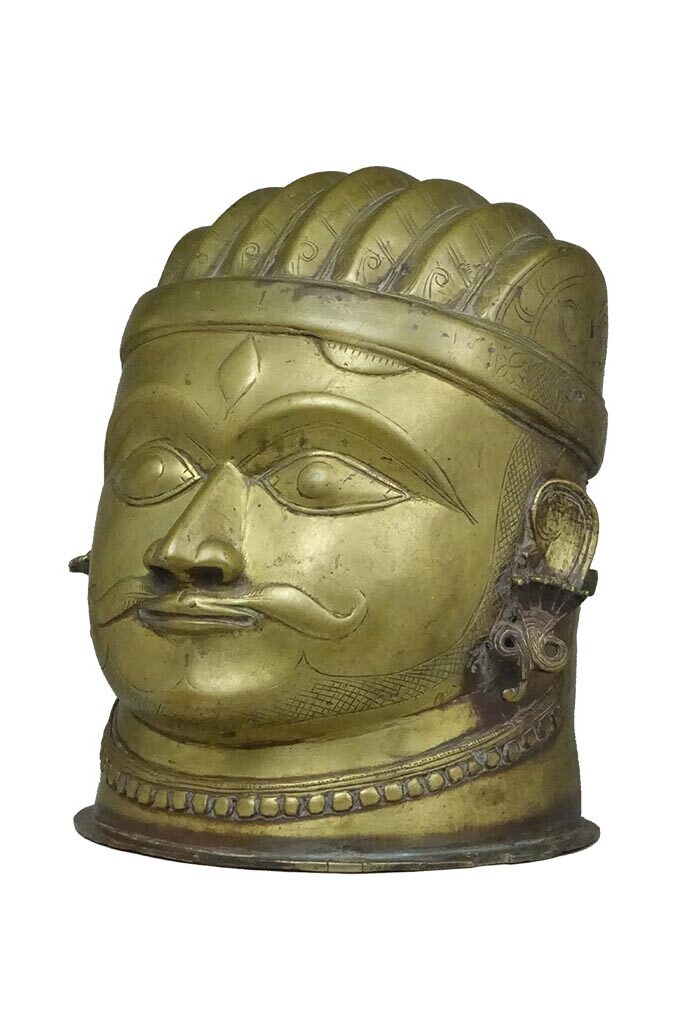



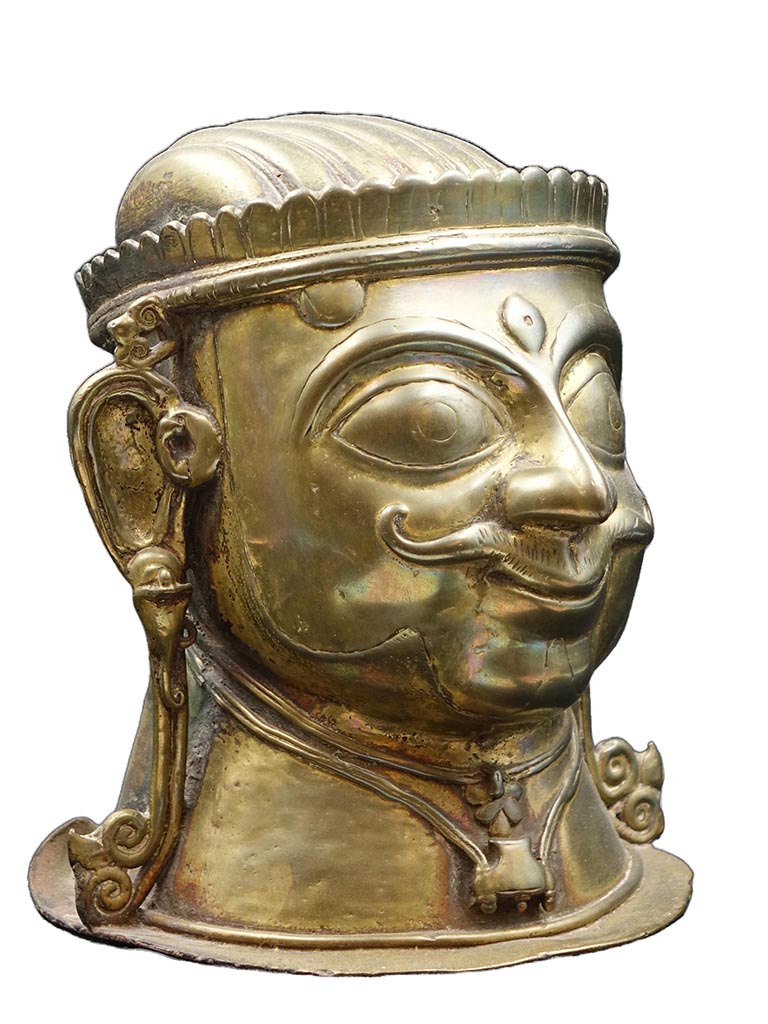

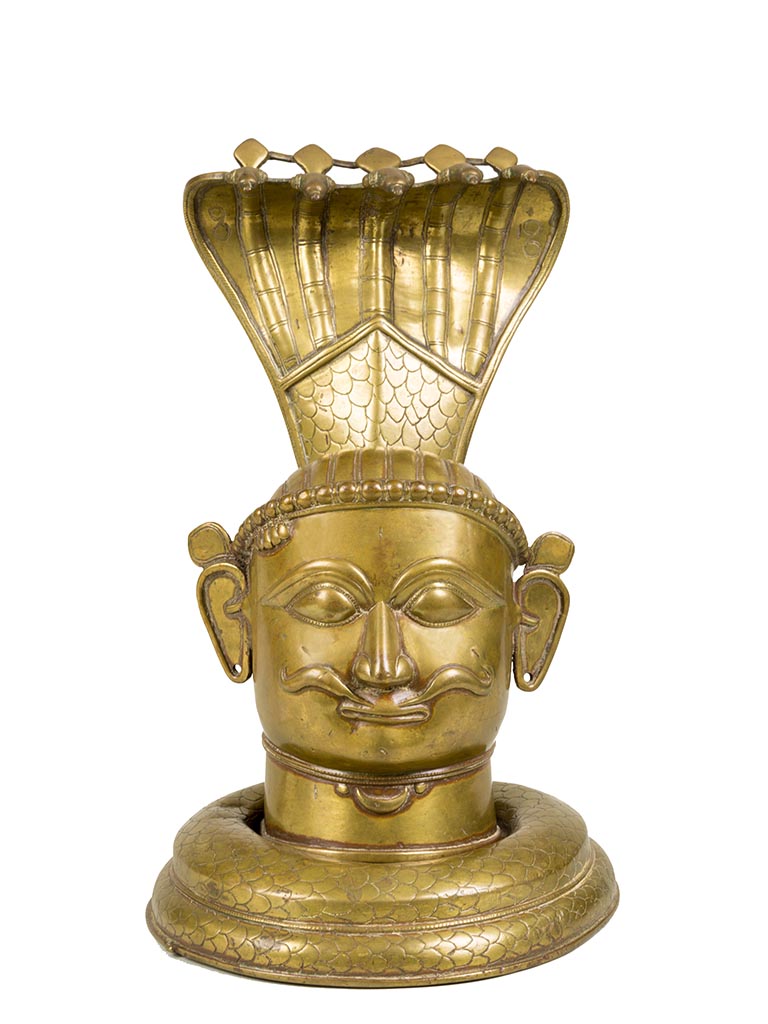
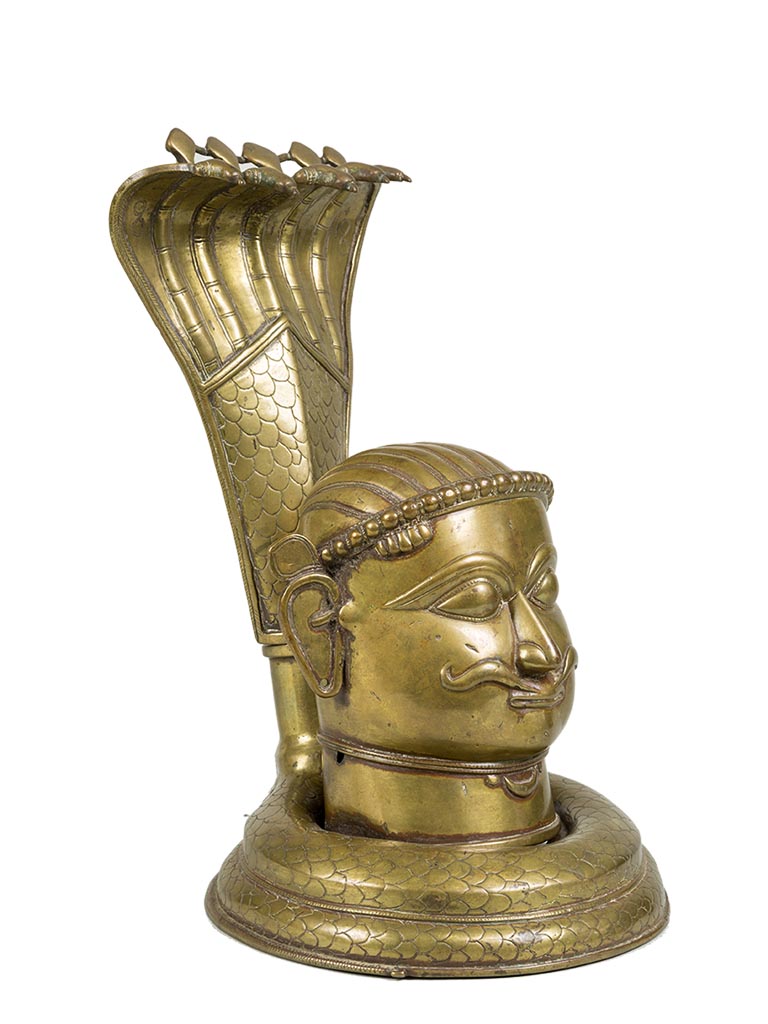

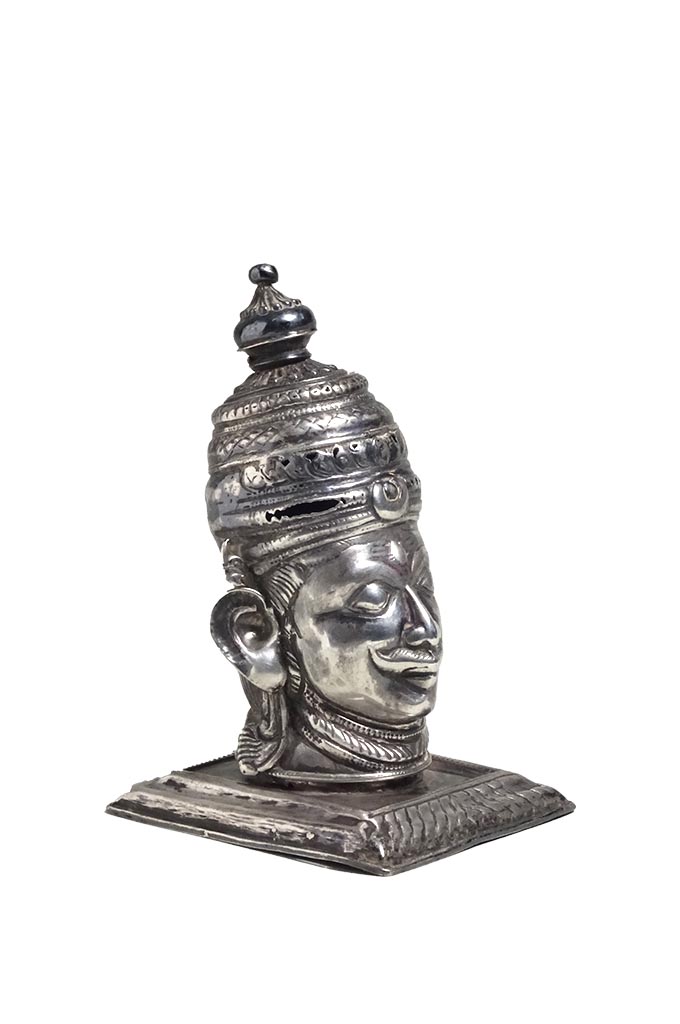
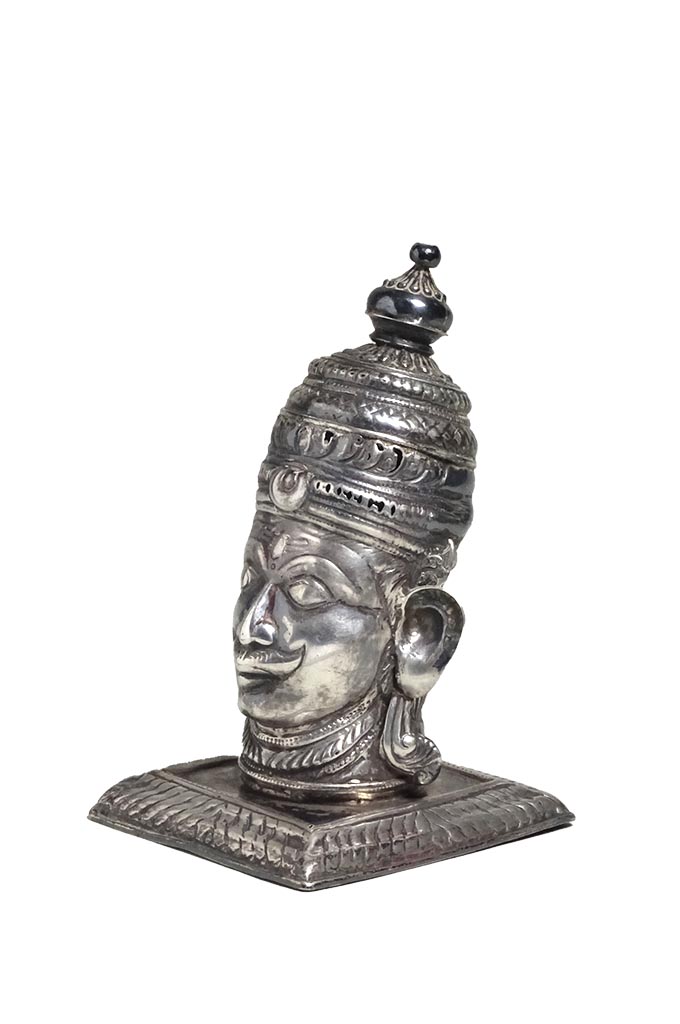
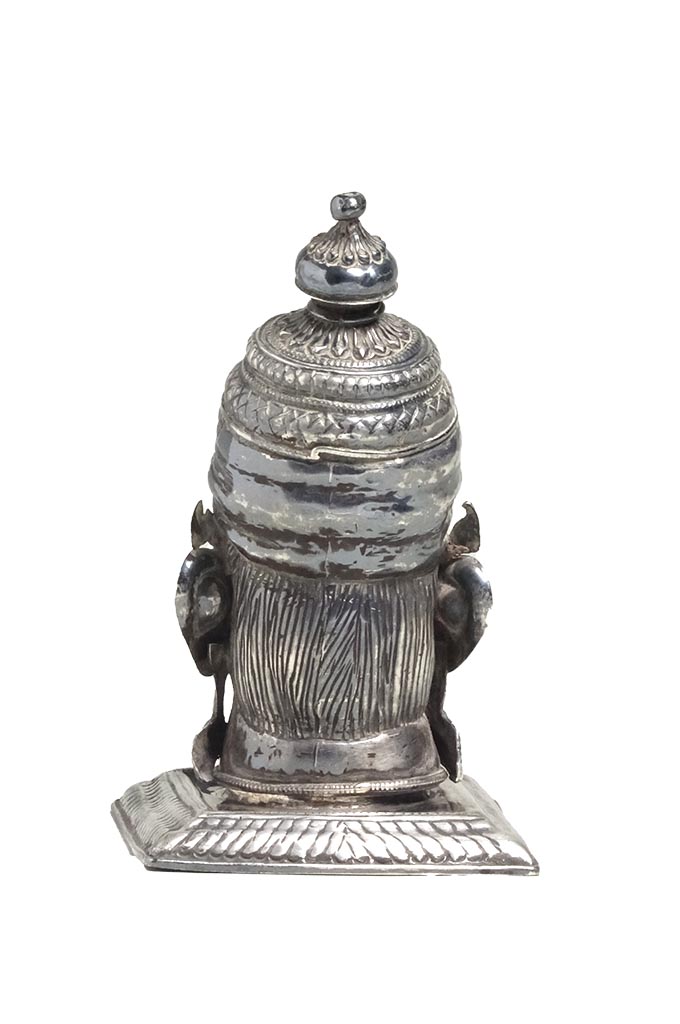
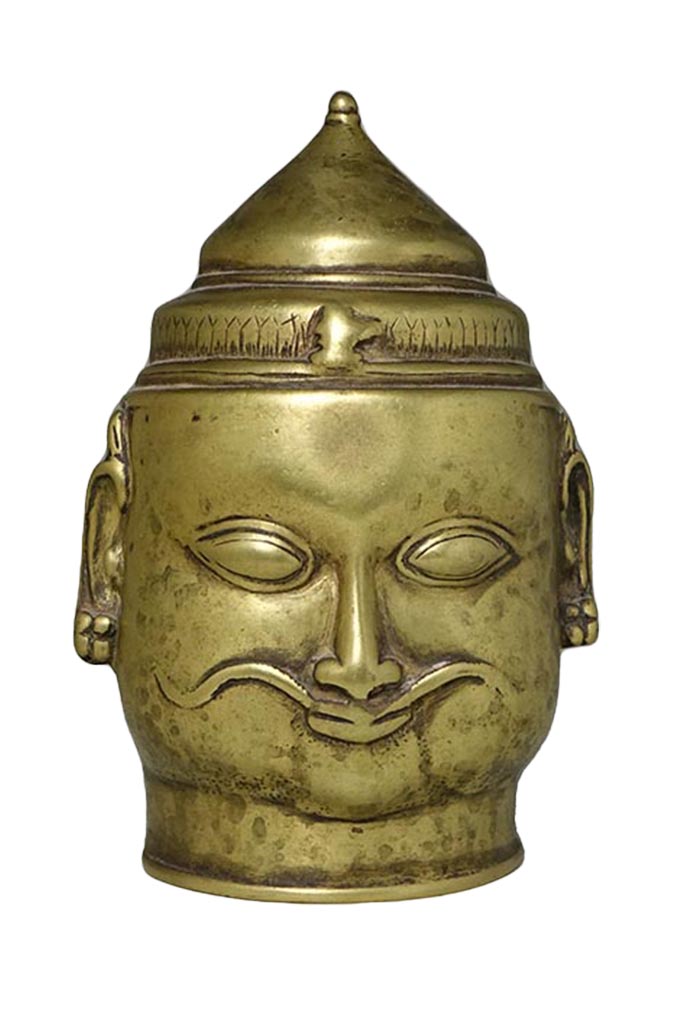
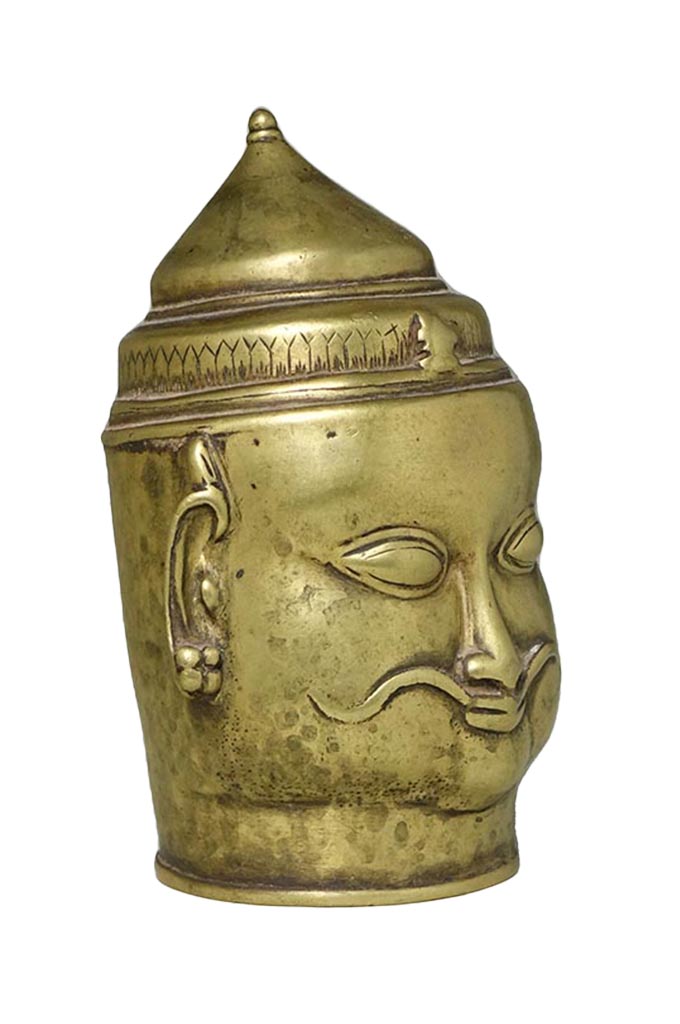
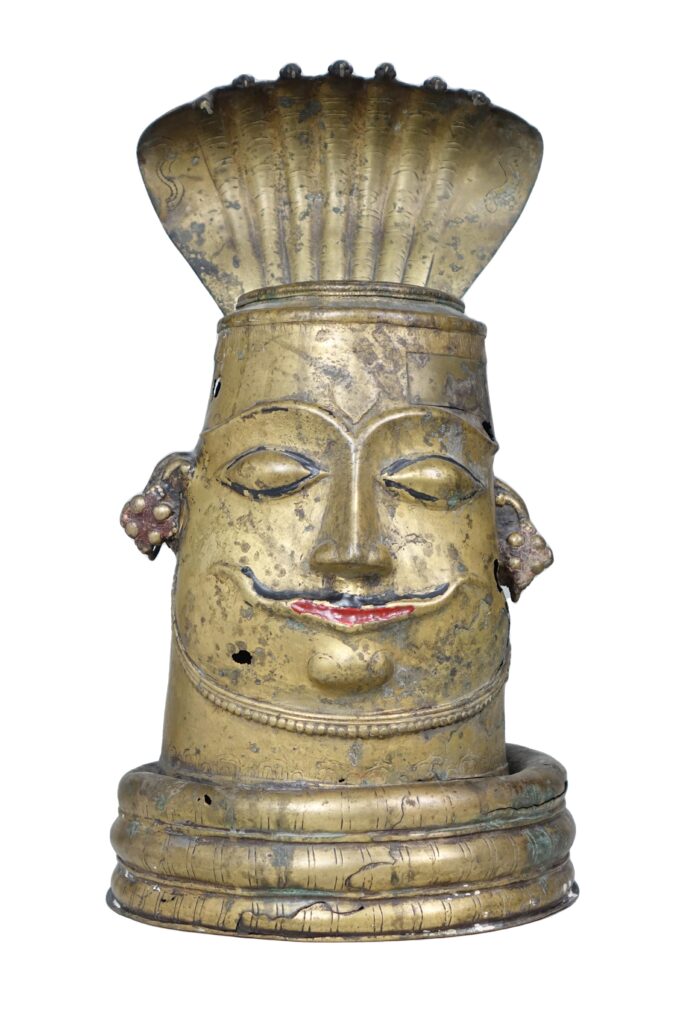
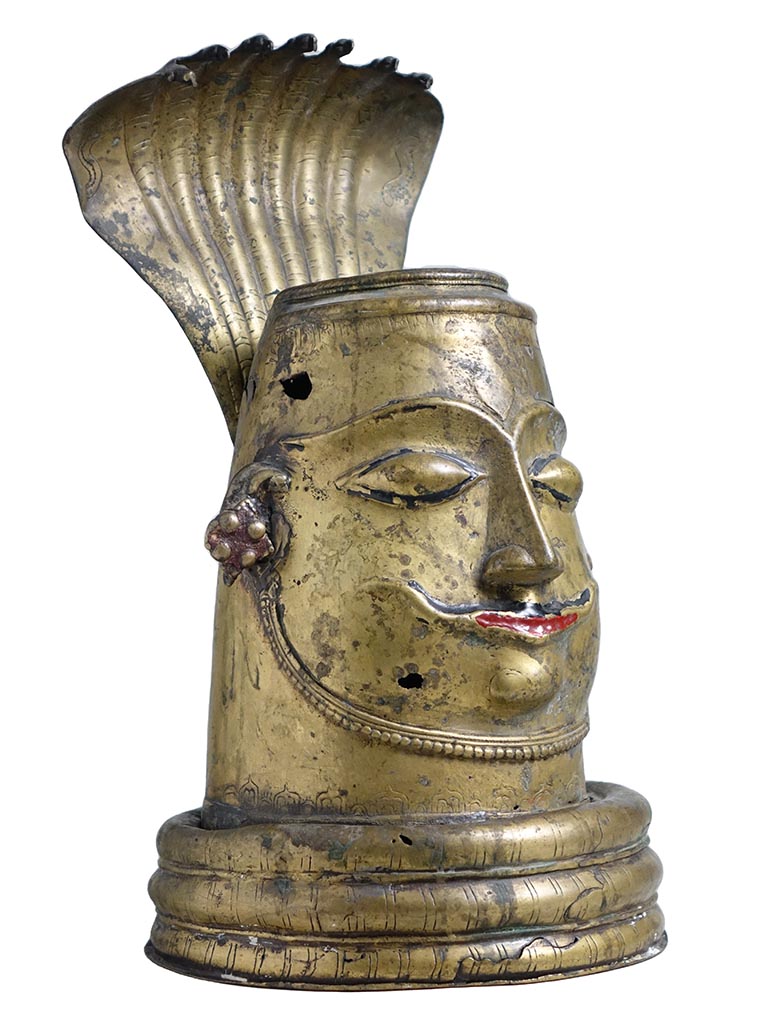
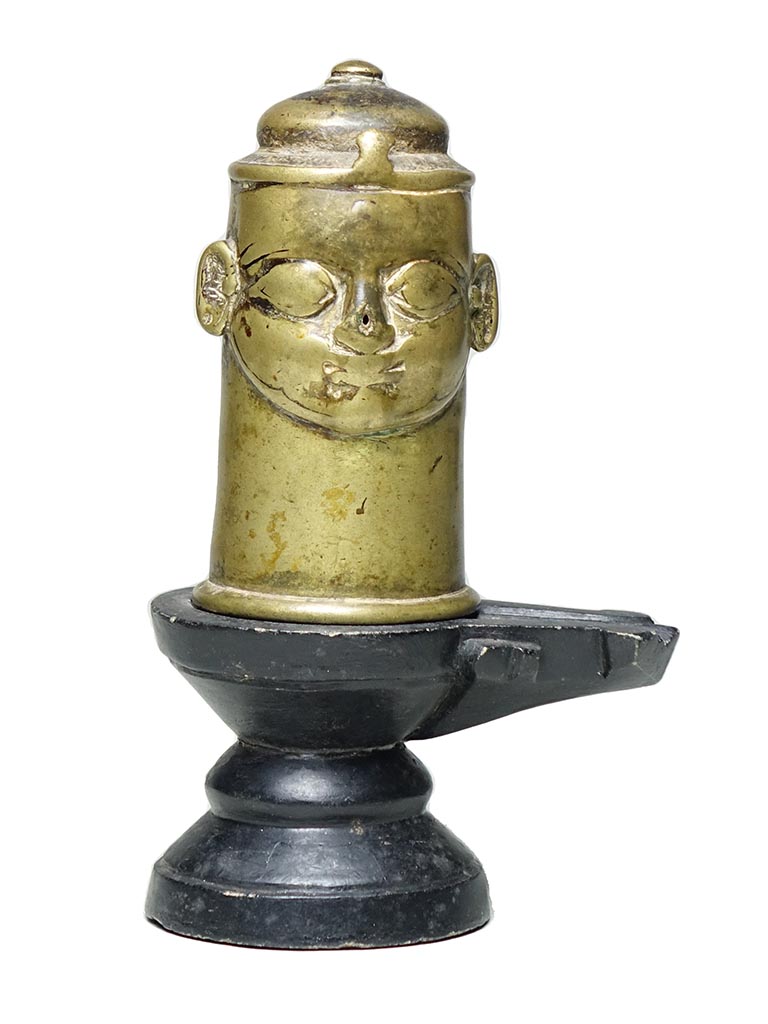
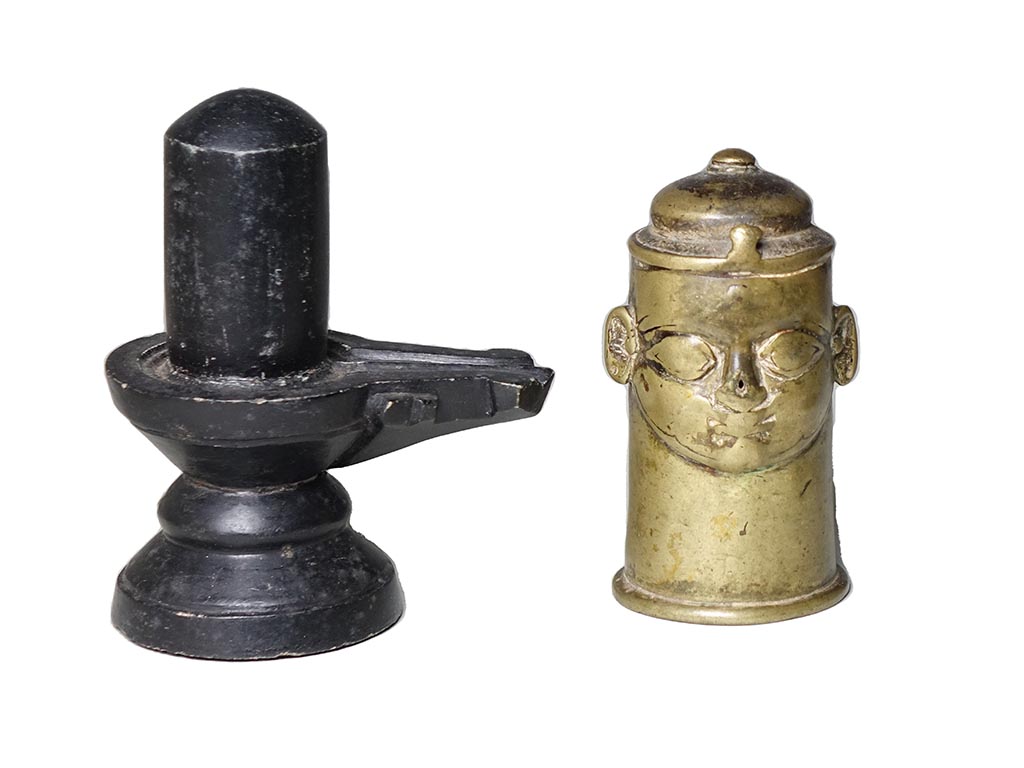
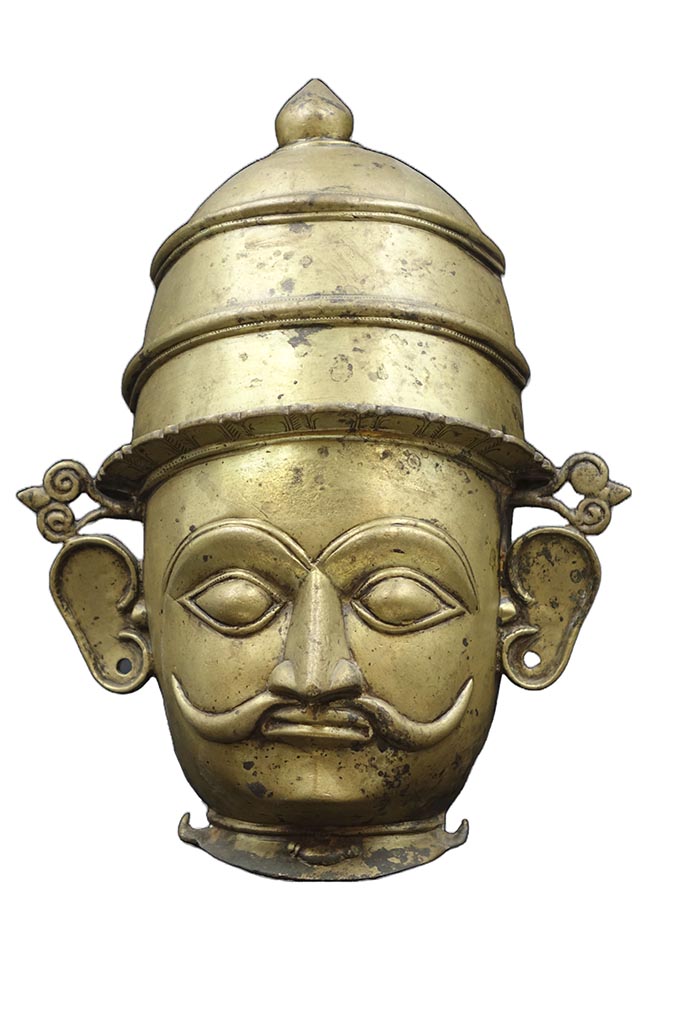

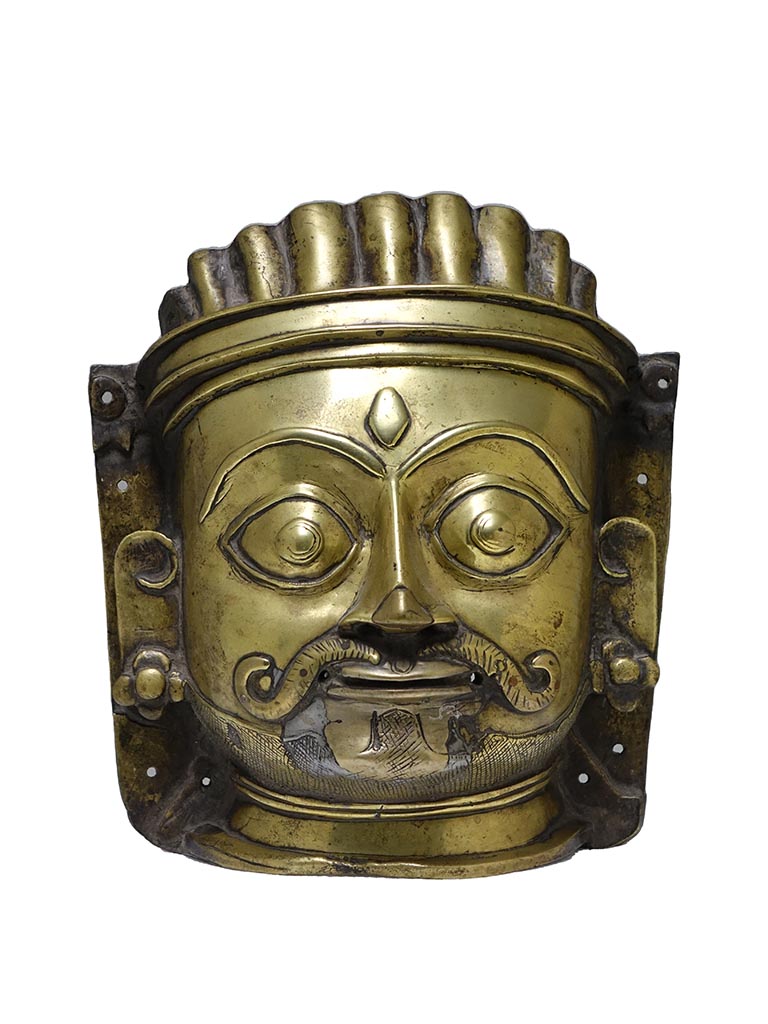
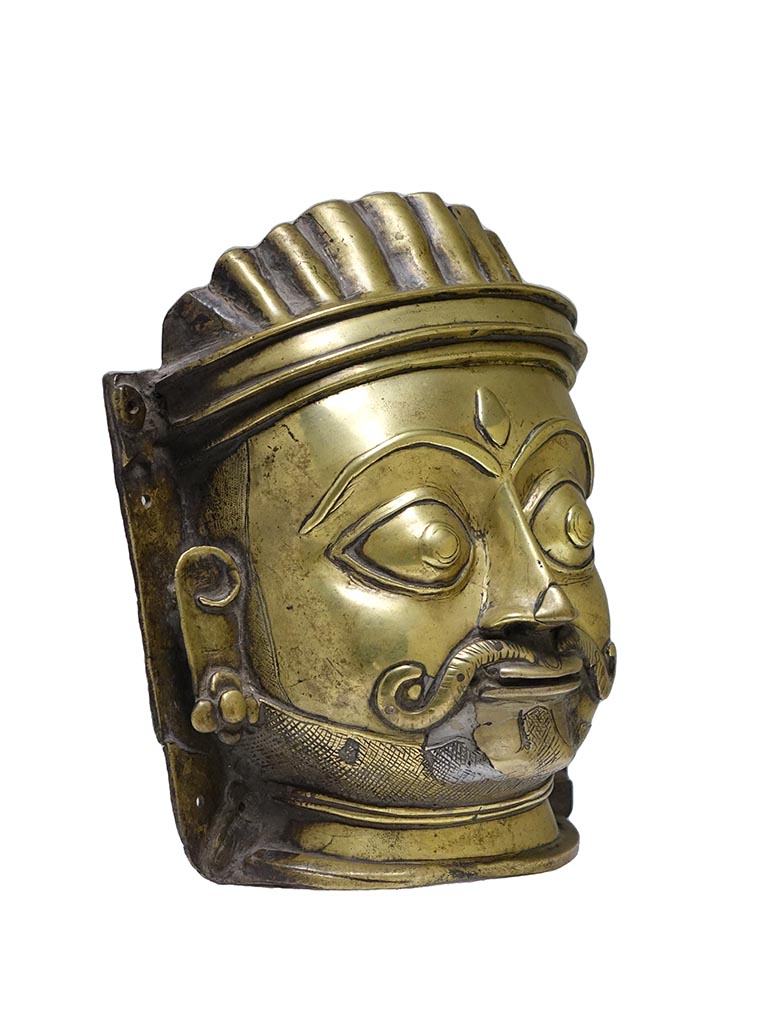
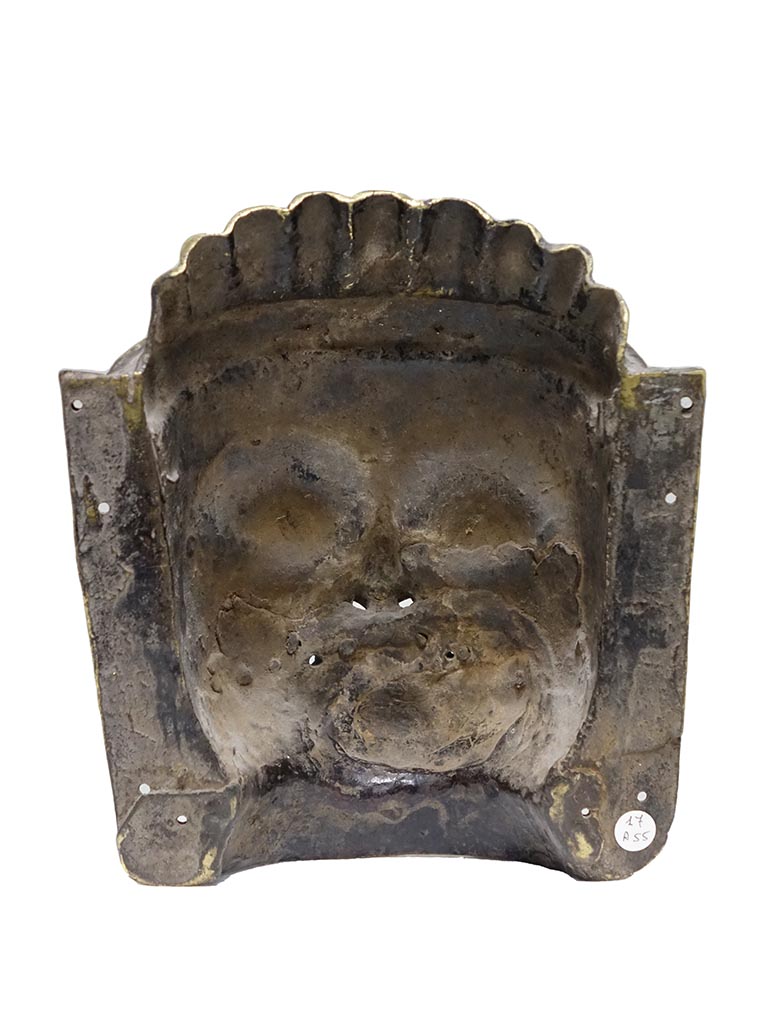






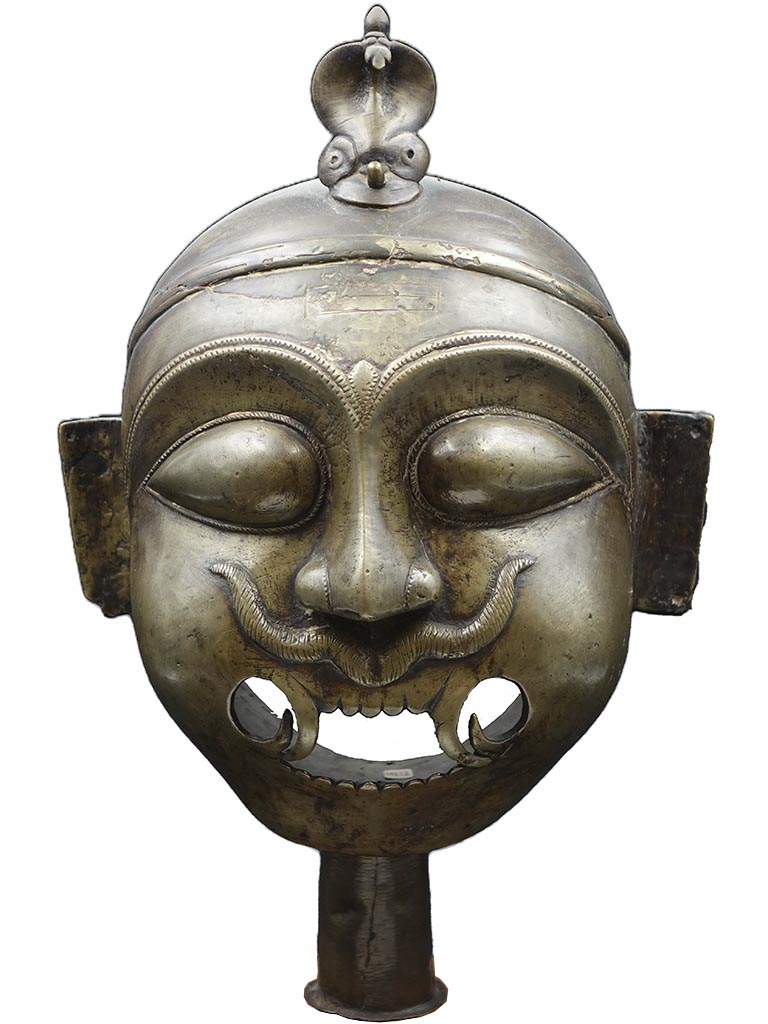
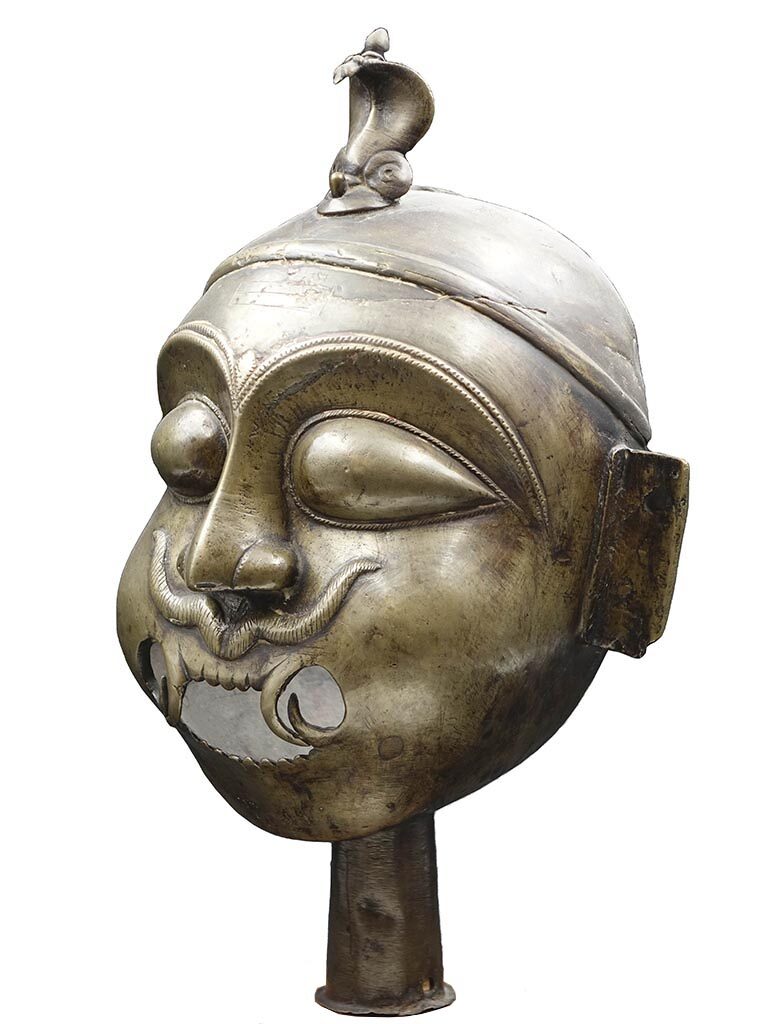






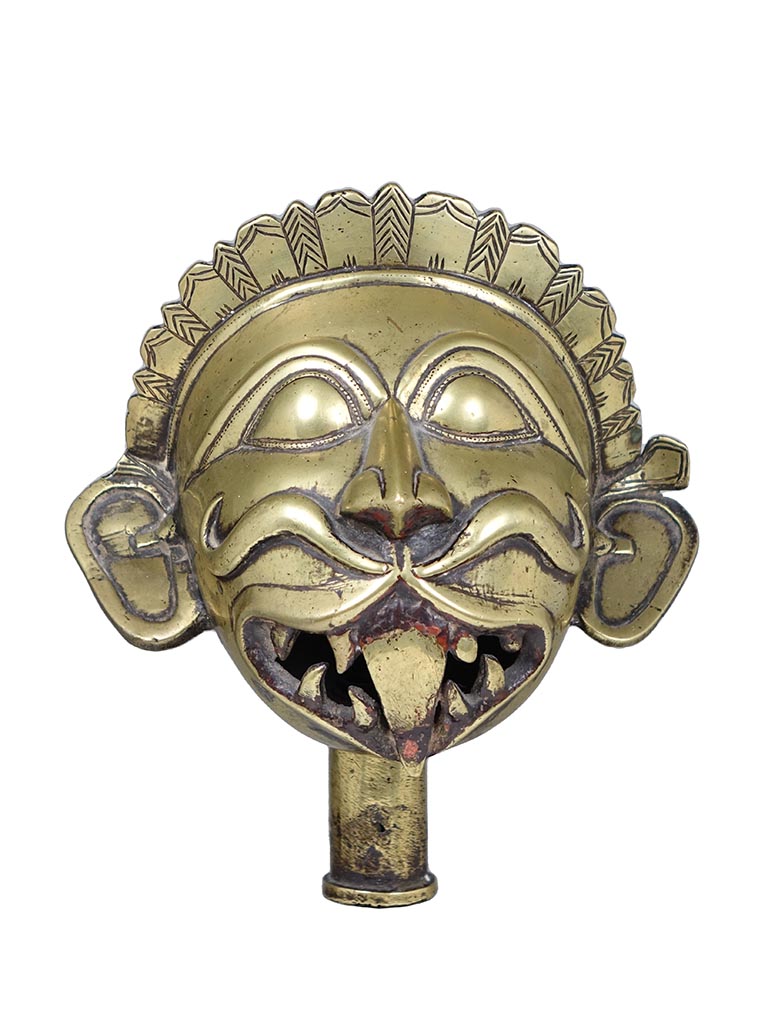
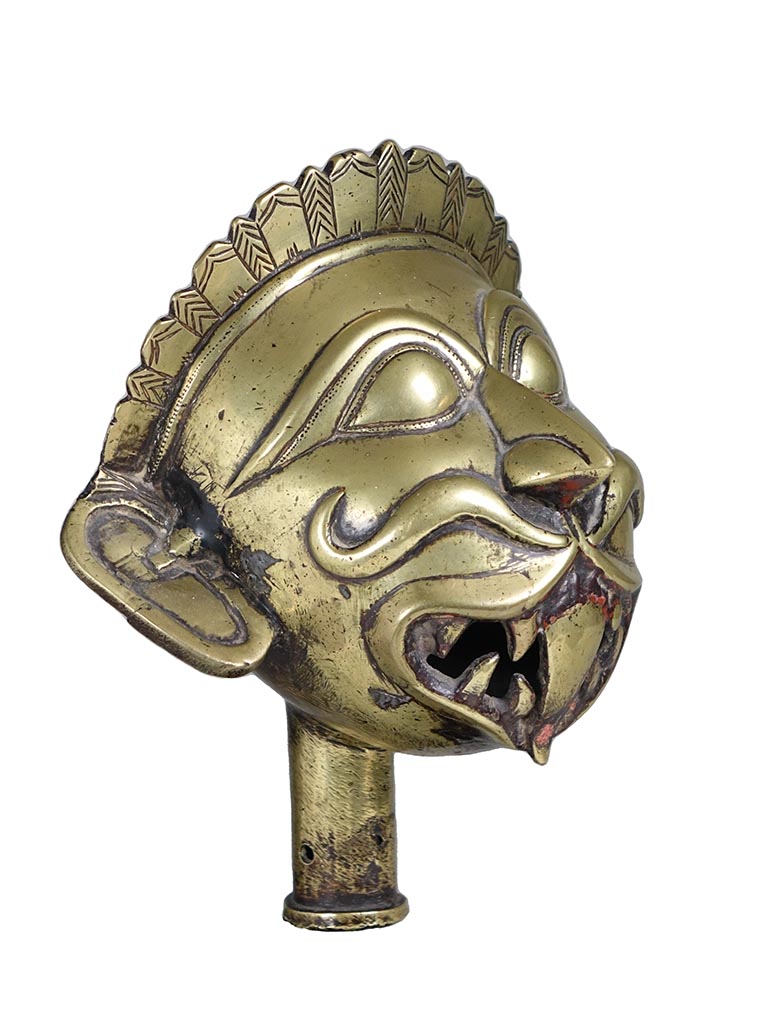
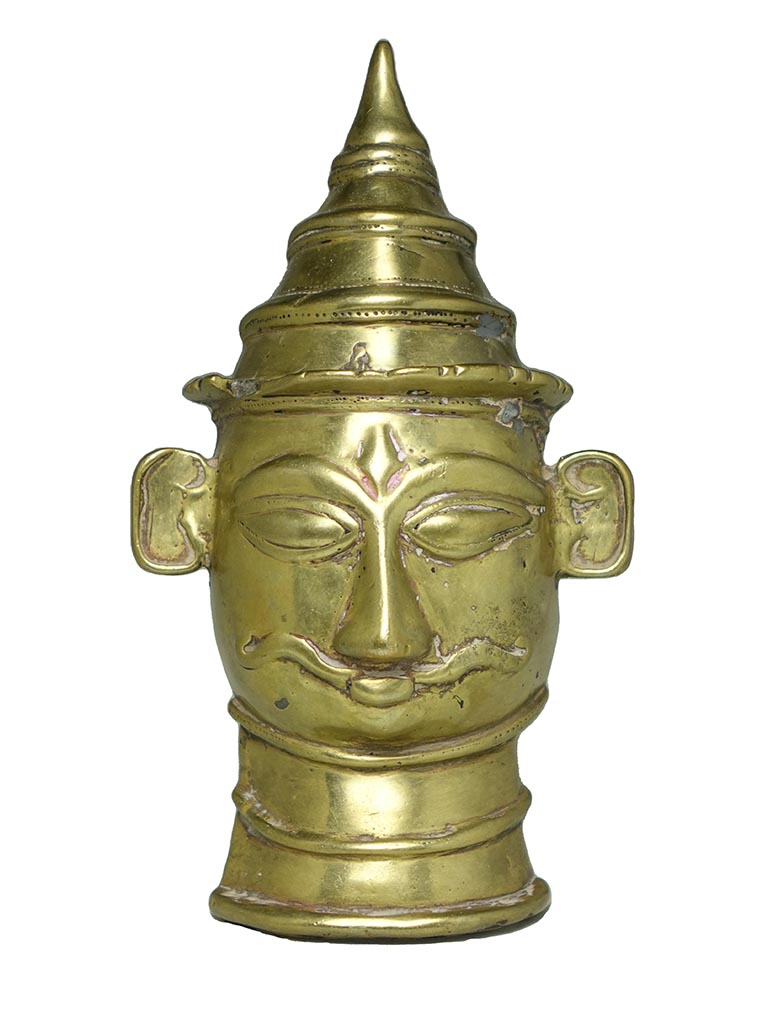
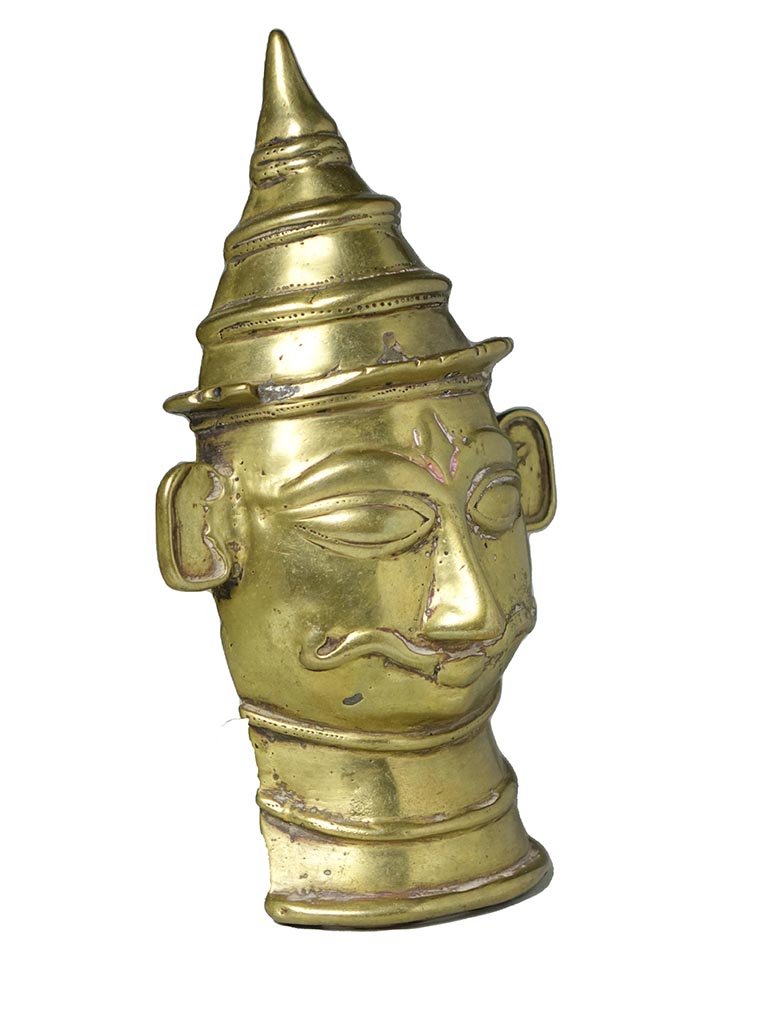
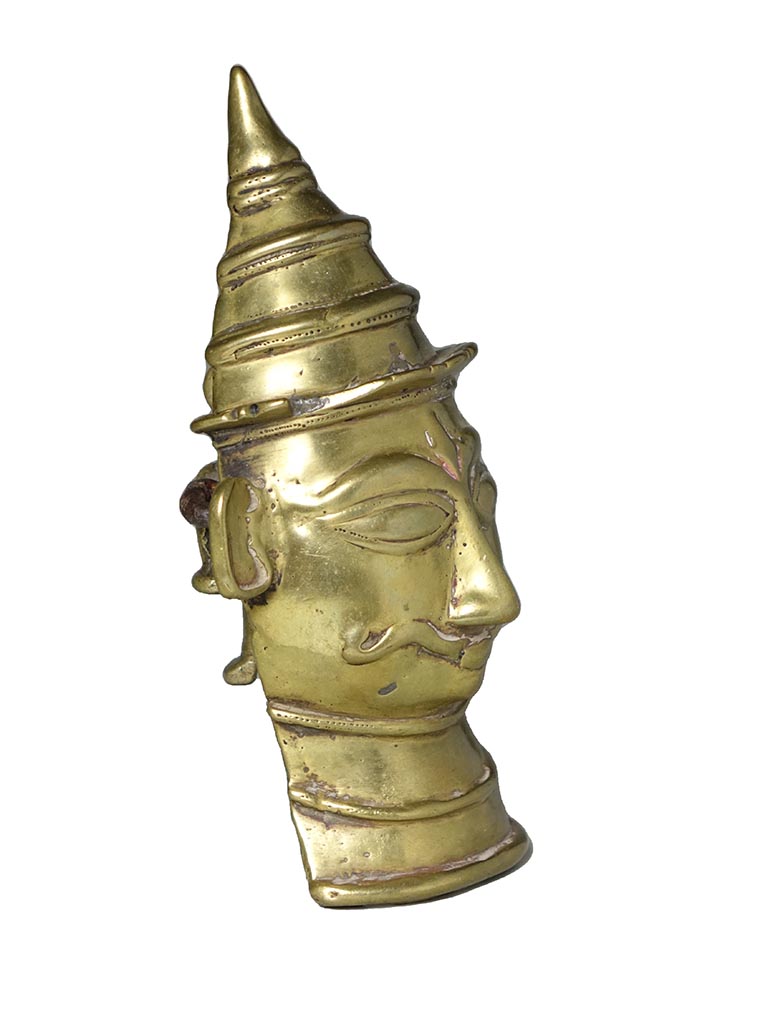
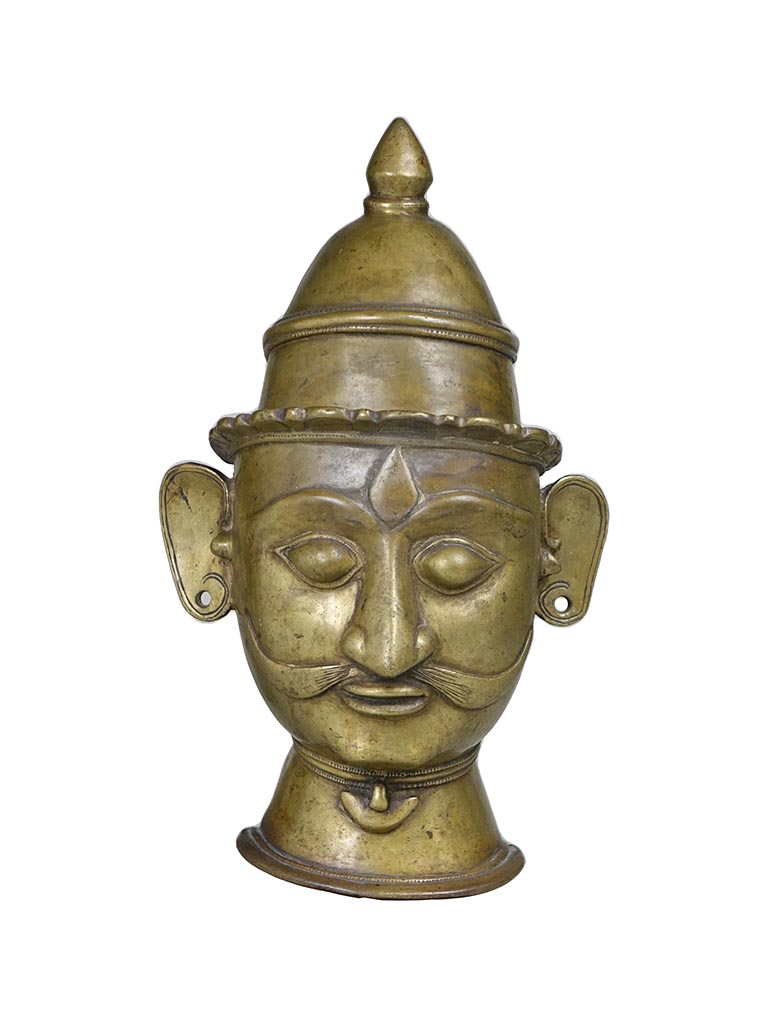
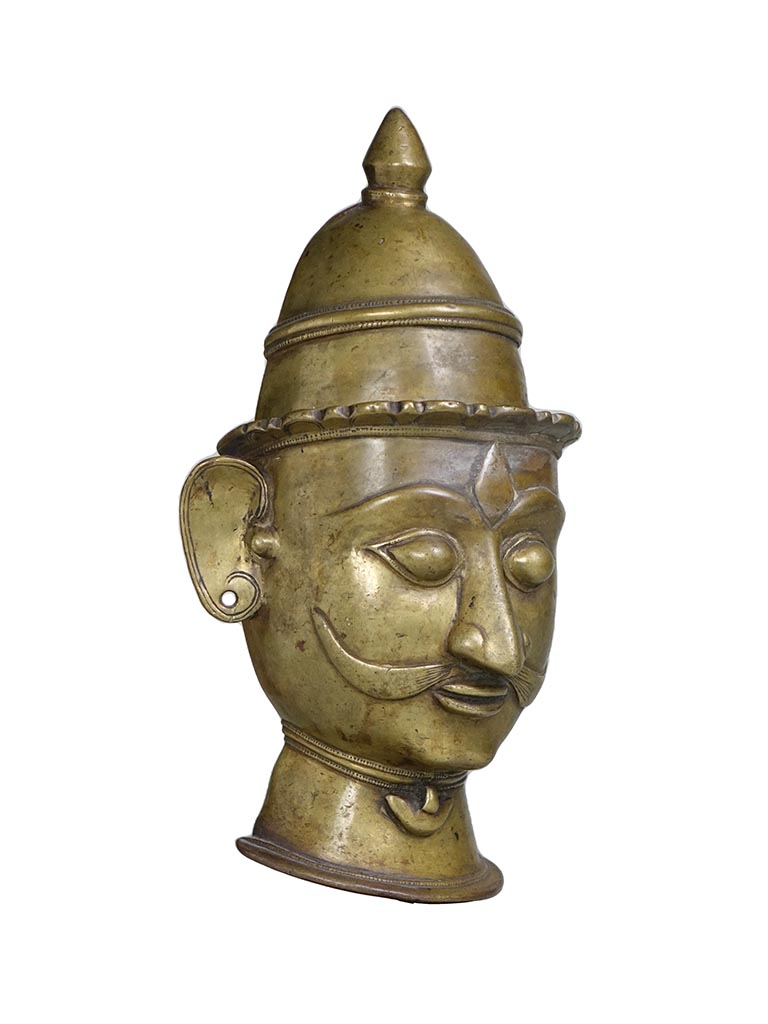
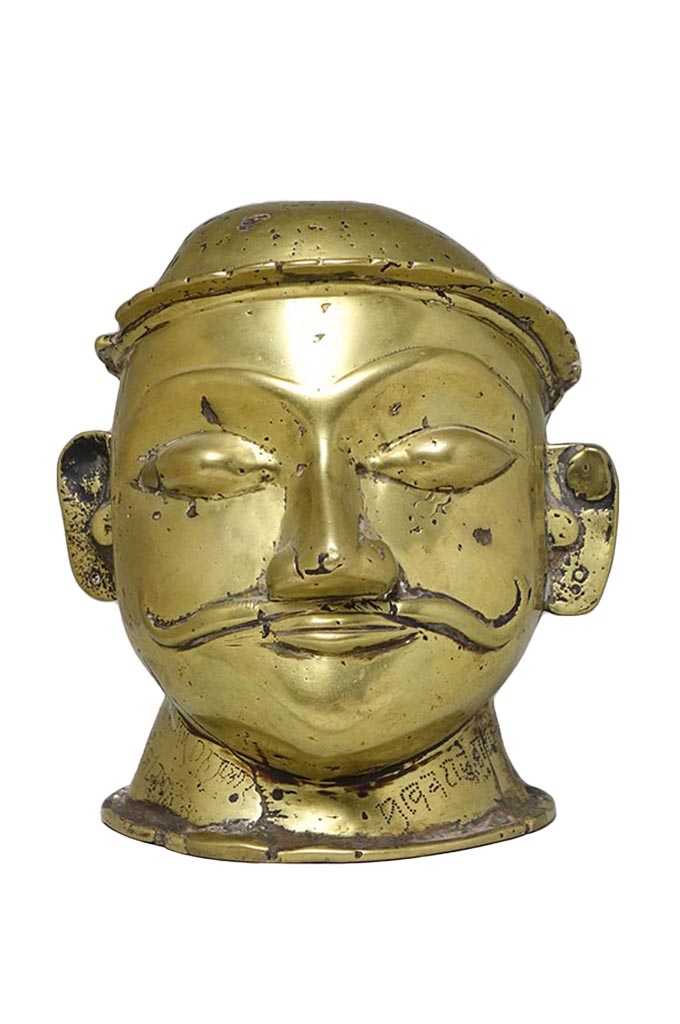
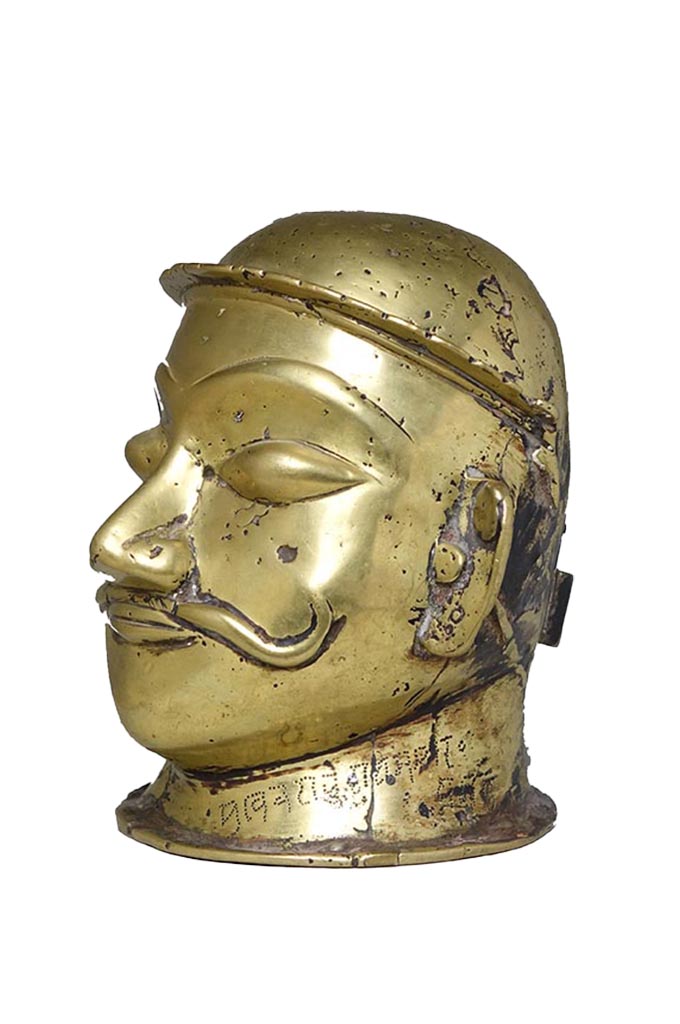
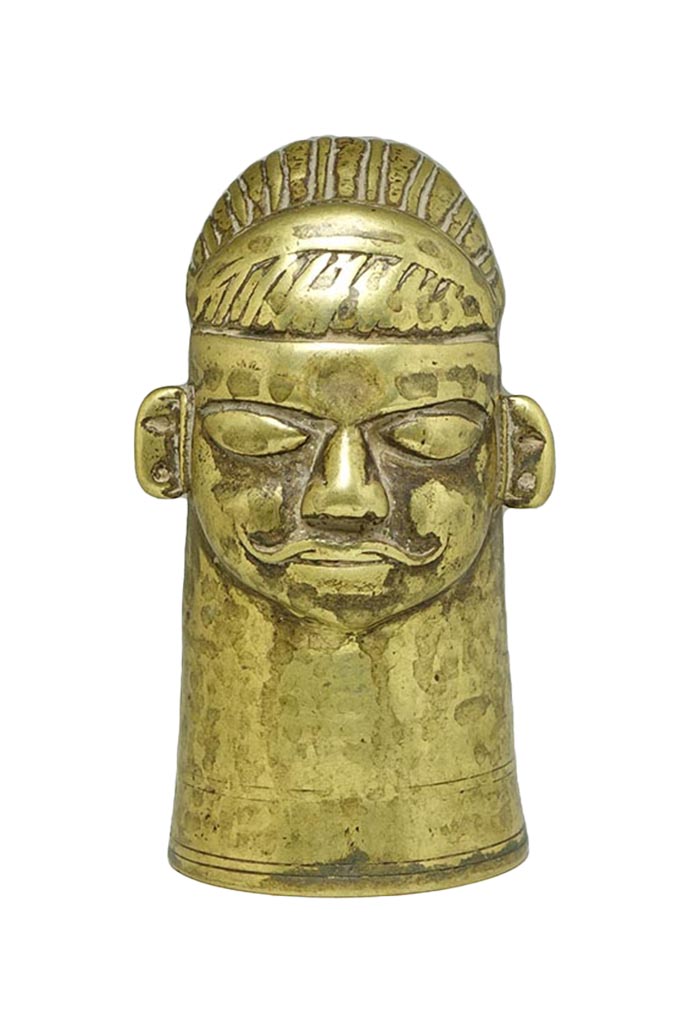
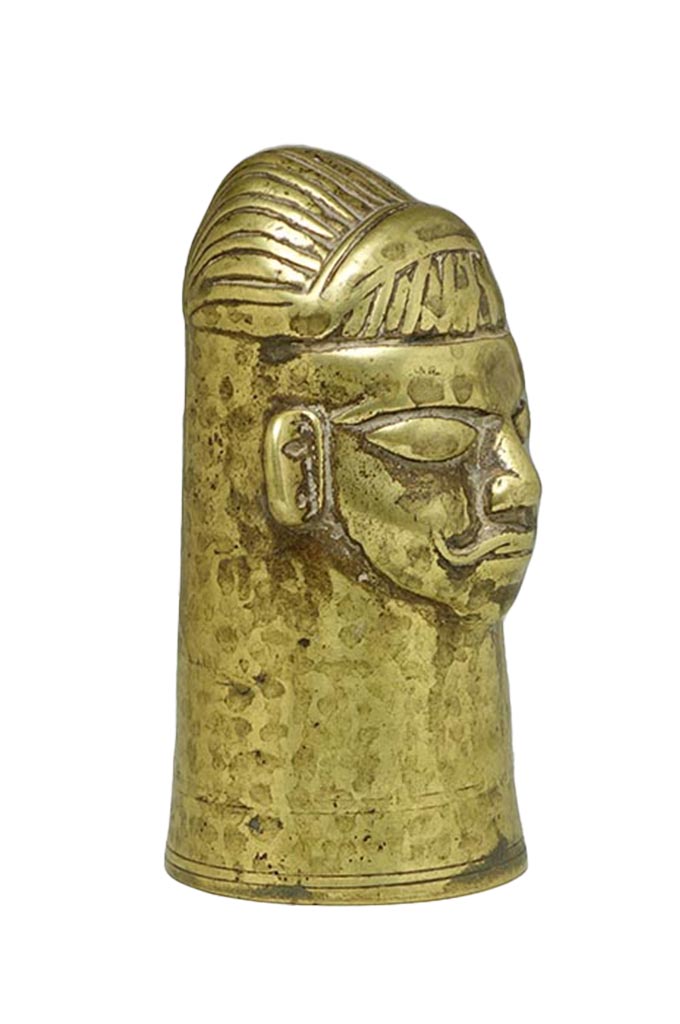
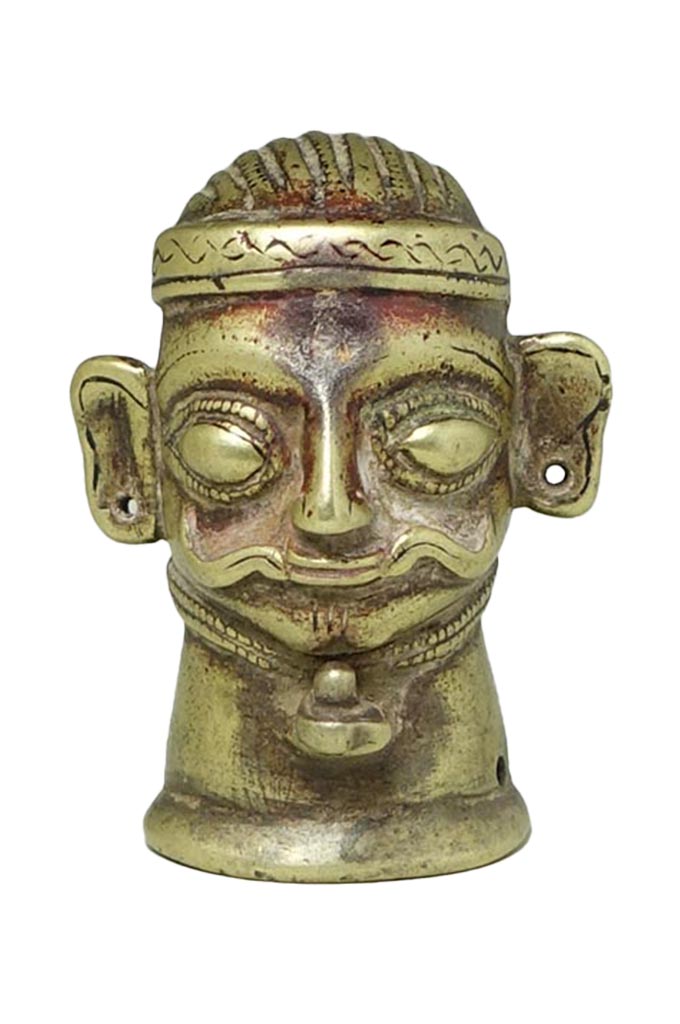
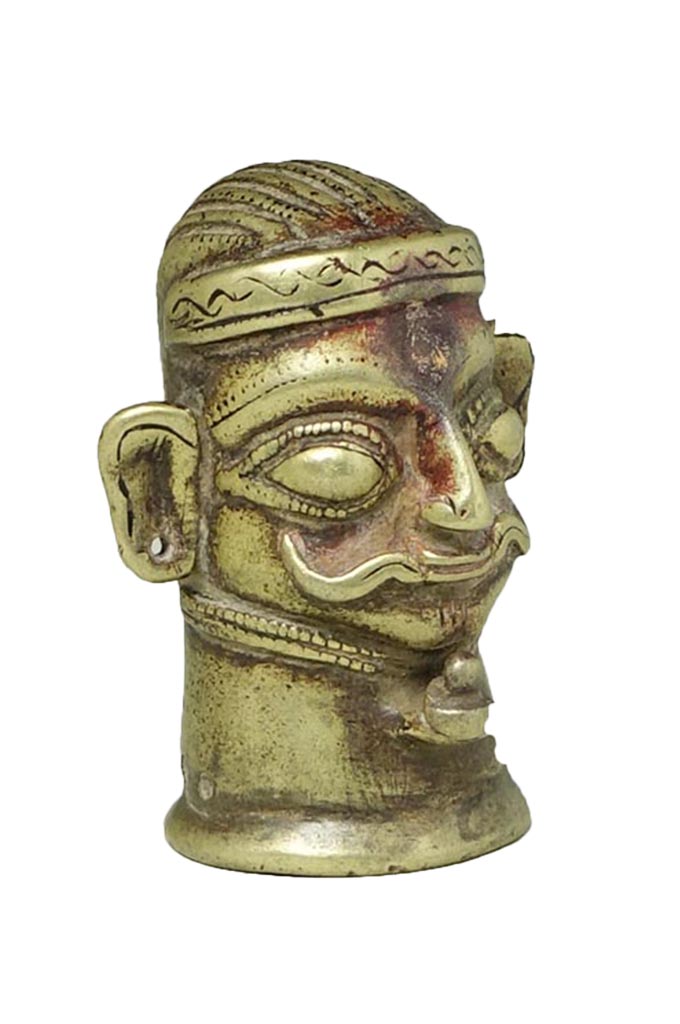
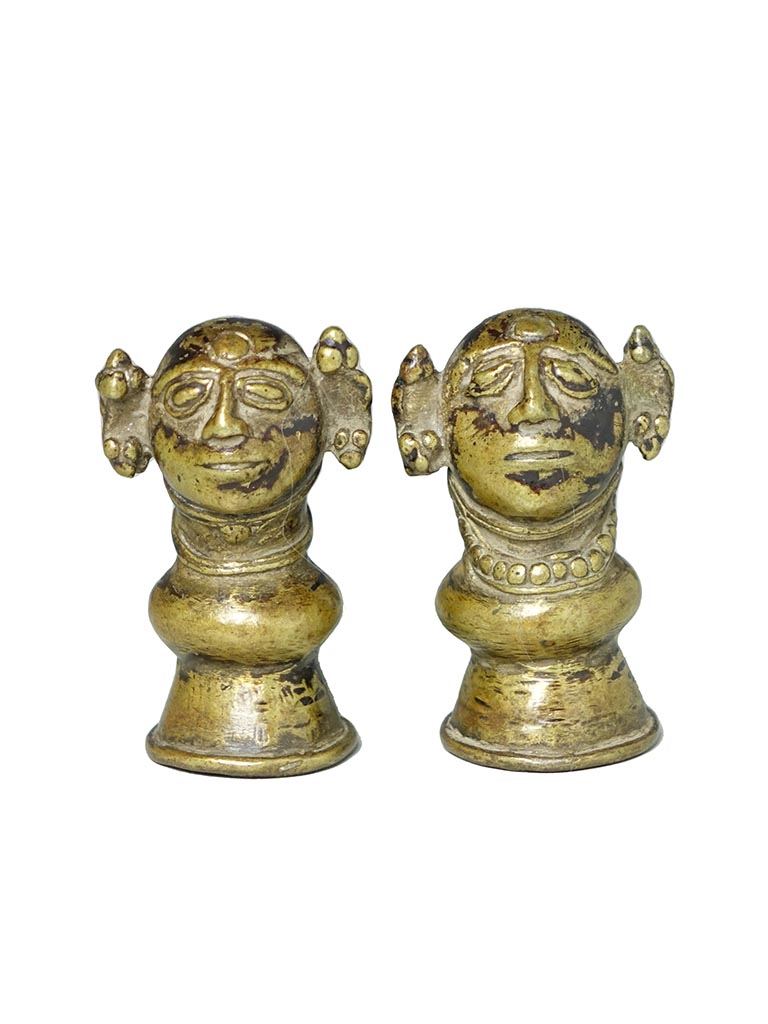
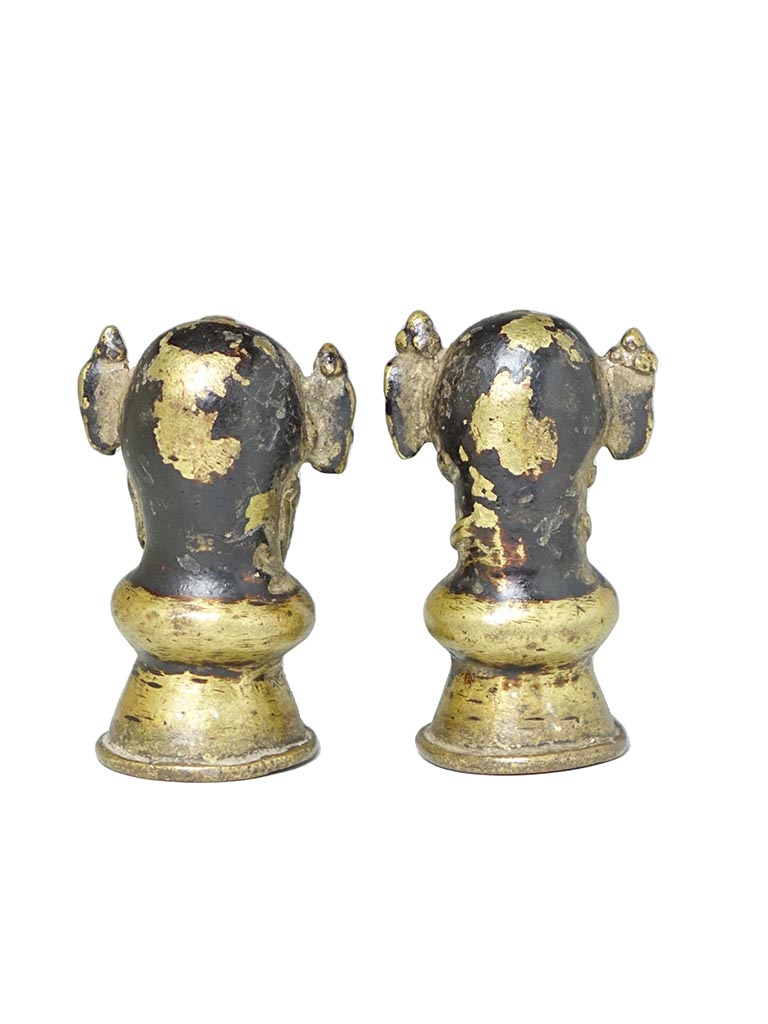
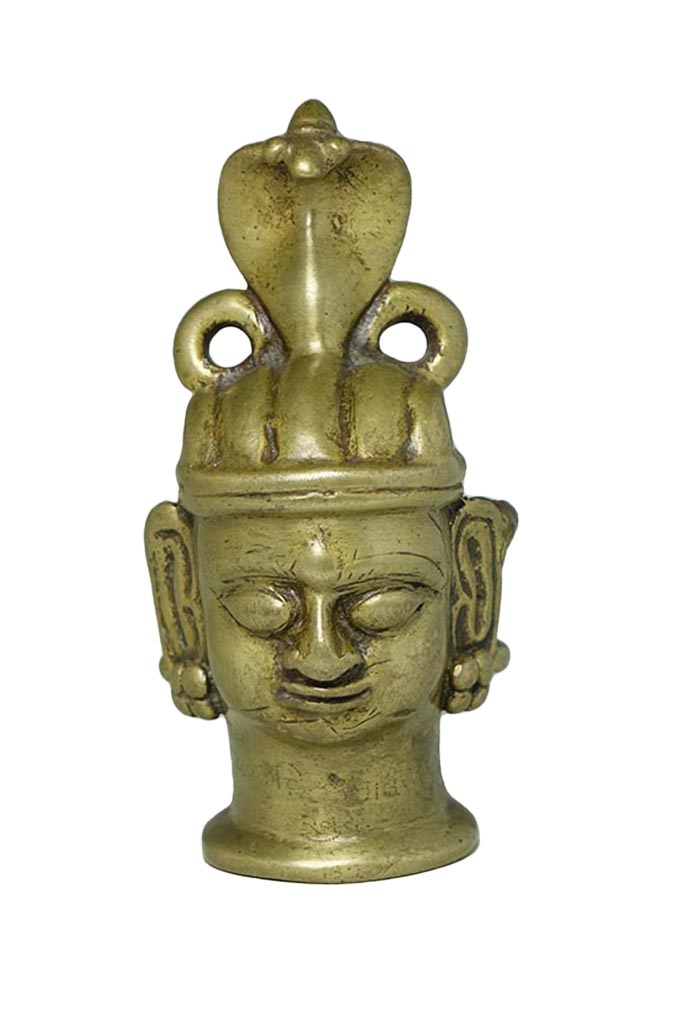
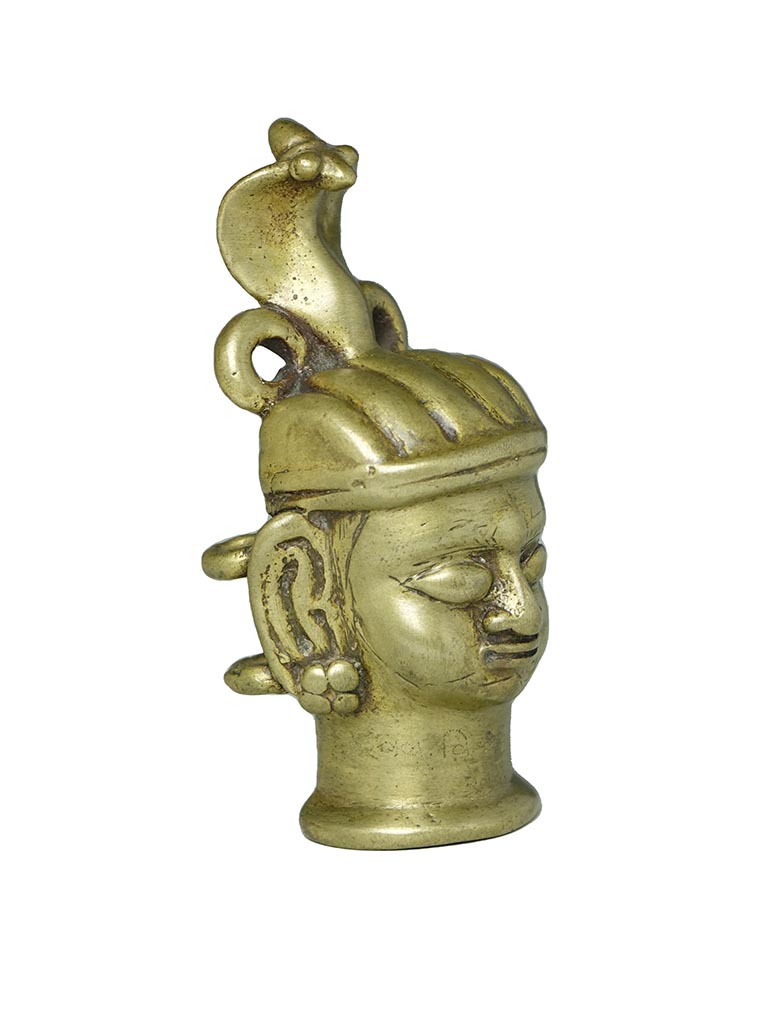
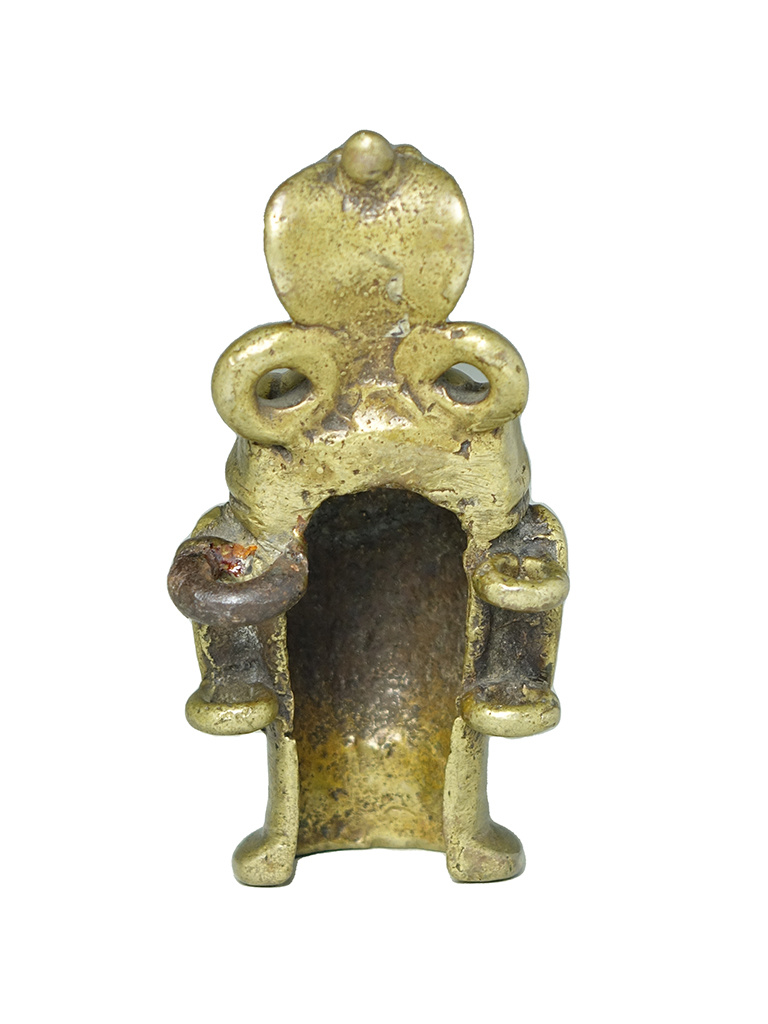




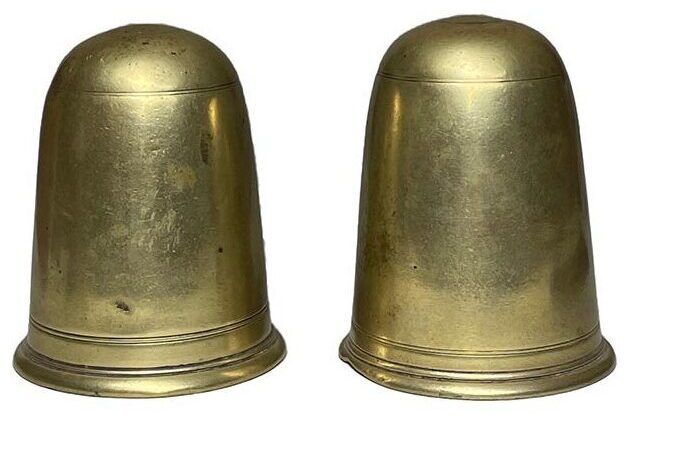
No Comments